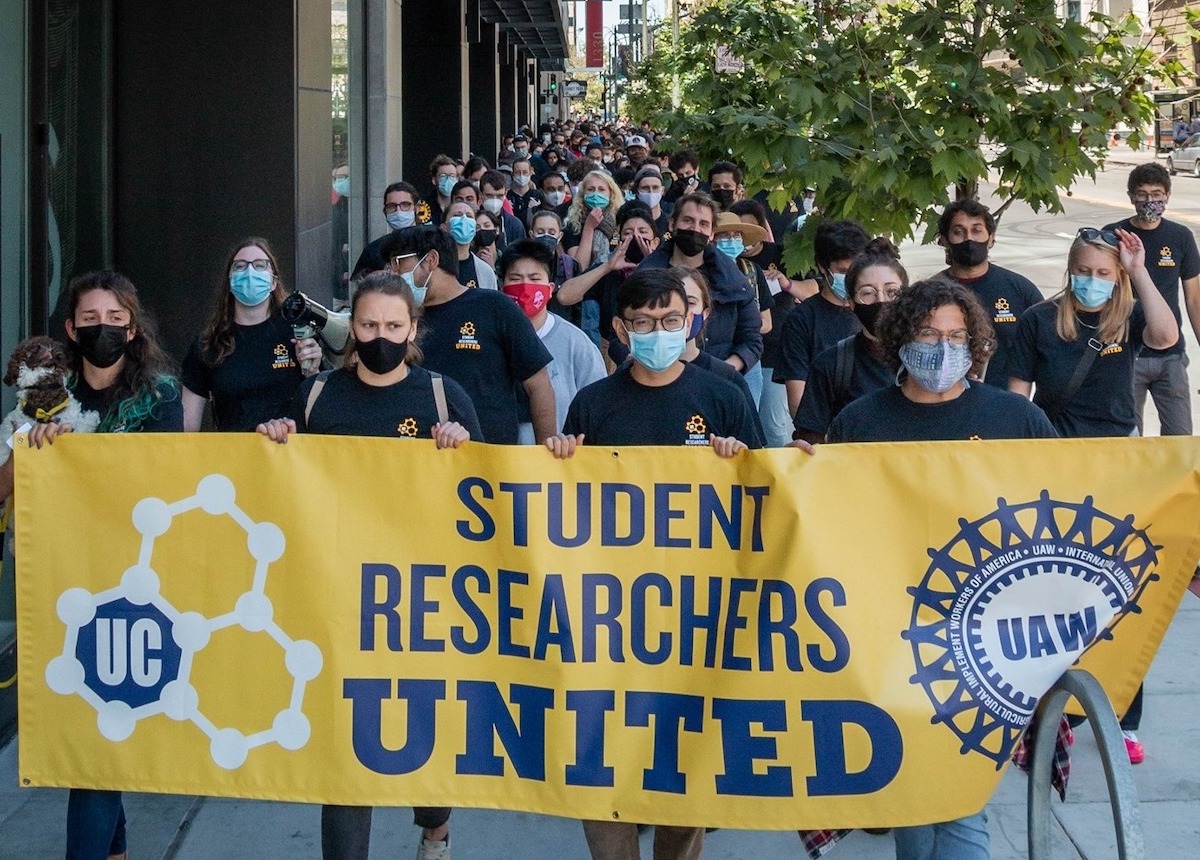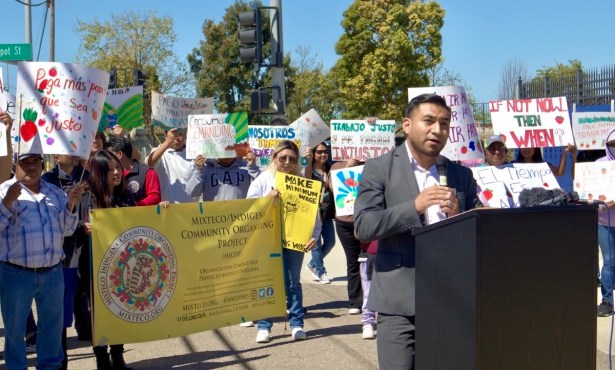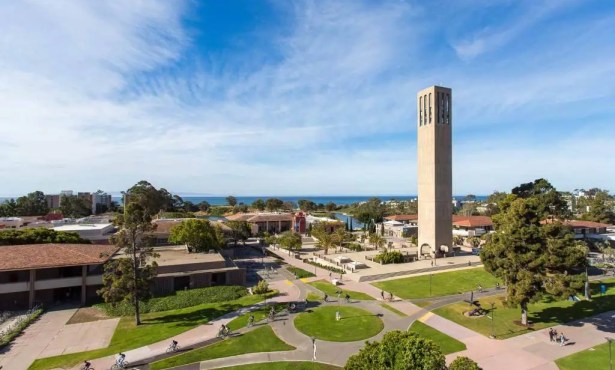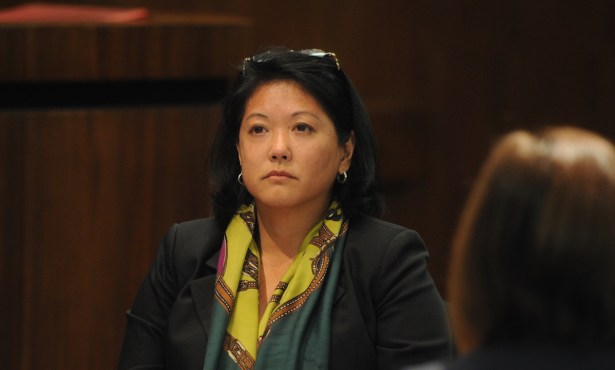UC Student Researchers Union Gains Recognition
Threaten Strike, University System Acquiesces, Contract Under Negotiation

After months of negotiating deadlock, the University of California system formally recognized graduate student researchers as higher-education employees and thus their right to unionize. “Almost every student researcher I’ve talked to knows someone who has been underpaid, overworked, and/or abused in a toxic work environment,” said Kevin Smith, an SRU-UAW organizer and UCSB student researcher. “Now we are another step closer to gaining some real protections.”
Until 2017, the California Higher Education Employer-Employee Relations Act held that student researchers did not count as higher-education employees and thus could not form a union. Nevertheless, members of UAW 2865 (a union for teaching assistants, graduate instructors, and tutors) and student researchers have remained in close contact since the 1990s. Many student researchers were previously members of UAW 2865, gaining insight about union organizing and making connections. “Researchers move fluidly between work positions and sources of funding,” said Becky Martin, an SRU-UAW member and UCSB student researcher. “A graduate student could be a teaching assistant one quarter, then next quarter be on grant in a lab.”
The motives for student researchers to form a union were manifold. In Title IX disputes between UC and student researchers, there was no guarantee of a third-party arbitrator. There were no uniform regulations for workplace health and safety in labs; under the status quo, Principal Investigators (PIs) of labs had individual discretion over providing compensation and assistance when a student researcher was injured at work. “Many researchers dropped out of their program because of poor working conditions and lack of recourse,” said Martin. “Even researchers who could switch labs due to unsupportive or abusive PIs risked losing all their work progress.”
While some problems were universal across UC campuses, several were especially acute for UCSB researchers. Due to the high cost of living in the areas surrounding UCSB’s campus, many student researchers emphasized the need for higher compensation for their work above all or most other issues. “A typical UCSB student researcher spends more than half their income on rent,” said Smith. “That figure is way beyond the 30 percent threshold for what the federal government defines as a maximum justifiable rent burden.”
In late 2017, California Senator Nancy Skinner (D-Berkeley) shepherded through Senate Bill 201, which amended the Higher Education Employer-Employee Relations Act to include student researchers. With the gates now thrown open, student researchers prepared to navigate the process of forming their own union.
Before negotiations with UC could begin, student researchers had to submit union authorization cards from a majority-plus-one of their body and gain verification by California’s Public Employee Relations Board. UC campuses coordinated their card-collecting efforts through committees, and card-collecting at UCSB was not straightforward. “It takes a lot of work to penetrate into different departments and labs,” explained Martin. “It’s not as if we share many spaces like a lunch room … and some labs are a lot more insular than others.” COVID-19 forced student researchers to work from home and precluded face-to-face meetings. “People are more likely to respond when you knock on lab doors than when you give them a cold call,” said Smith.
Sign up for Indy Today to receive fresh news from Independent.com, in your inbox, every morning.
In order to build support quietly and avoid drawing too much attention from UC, organizers relied heavily on informal social and work connections rather than public relations campaigns. Organizers also ran surveys of student researchers, taking information about what they wanted in a final contract with UC. “This was about centering what all of this is about,” said Martin. “Forming a union is a first step, but we also needed to focus on what specifically we were fighting for.”
In May 2021, organizers across UC campuses passed their first major test, submitting just under 11,000 signed cards (out of 17,000 student researchers) to be verified by the Public Employee Relations Board. Sources told Martin that UCSB had an especially high proportion of student researchers turn in cards, due in part to unique issues of housing and according compensation.
But then, progress turned to stagnation. Although UC responded to SRU-UAW requests to bargain by California’s statutory deadlines, Smith said that UC also used general delay tactics, often requesting multiple extensions and filing responses at the last minute. When formal negotiations finally began, the discussions largely centered on determining who would be included in the union. “There was a group of graduate students that required closer examination and discussion,” said UC spokesperson Ryan King.
This group of graduate students mostly consisted of fellows and trainees who received funding from non-university sources such as government grants. SRU-UAW organizers wanted them in; UC did not. “Functionally, fellows and trainees are like any other student researcher,” Martin explained. “Even if the funding source is different, they work in the same roles and for the same employers, conducting research for the university’s mission.” In October 2021, UCSB student researchers submitted a resolution to Chancellor Henry T. Yang, requesting him to press for UC to recognize the union. “The chancellor’s office wasn’t very responsive,” said Smith.
As negotiations meandered around the issue, UC maintained that it was acting in good faith and supported student researchers’ right to unionize. In an email, King wrote that “from the outset, UC fully supported our student researchers’ right to be represented by a union.” But after months of deadlock, SRU-UAW organizers lost patience and began preparations for a strike. This time, organizers could go from lab to lab in departments with which they were affiliated, knocking on doors and reaching out in-person. In late November, more than 97.5 percent of student researchers (10,890 people) voted to authorize the strike, which organizers said was a clear message that they were united in their demands for union recognition.
In the end, UC blinked. SRU-UAW claimed victory, citing in particular the inclusion of fellows and trainees in the final recognition agreement. Now the two parties must negotiate the contract itself, which SRU-UAW hopes will confirm the benefits and protections they have been demanding.
Support the Santa Barbara Independent through a long-term or a single contribution.



